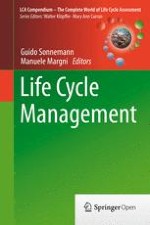1 Introduction
2 Secondary Consequences of Consumption Decisions
2.1 Overview
-
Changes in the available household resources income, time, and space, as well as further constraints to consumption, particularly food calories uptake capacity, drink intake capacity, skills and information availability, and access to products
-
Use of the freed household resources (or restrictions in case of reduced household resources)
-
Cross category effects
-
Mental secondary consequences
2.2 Changes in Available Household Resources and Consumption Constraints
-
Available income 4
-
Time
-
Space (volume, area)
-
Food calories uptake capability
-
Drink intake capability
-
Skills and information
-
Access to products and technologies
2.2.1 Available Income
2.2.2 Time
2.2.3 Space
2.2.4 Food Calories, Drink Intake
2.2.5 Skills and Information
2.2.6 Access to Products
2.2.7 Interchange Ability of Household Resources
2.3 Use of Freed Household Resources
2.3.1 Overview
-
More of the same product
-
More of the same function or need fulfilment
-
Marginal shift to better fulfil the less well fulfilled needs
-
General increase of average consumption
2.3.2 More of the Same Product
2.3.3 More of the Same Function or Need Fulfilment
2.3.4 Marginal Shift to Mix of Less Well Fulfilled Needs
2.3.5 General Increase of Average Consumption
2.4 Cross Category Effects
2.5 Mental Secondary Consequences
2.6 Higher Order Consequences of Economic Transactions
2.7 Towards a New Measure of the Environmental Life Cycle Performance of Products from Consumption Perspective
2.8 Happiness or Harm Due to Need (Over-) Fulfilment
The whole economy of human society is based on one general and simple principle: I want to be happy…. Denis Diderot (1713–1784), as cited in Elchardus (1991) (see Eckersley et al. (2001)
3 Sustainable Consumption on Different Levels
3.1 Product Level: From Functional Unit to Needs Fulfilment
3.2 Person or Household Level: Sustainable Lifestyles
-
Accurate LCI data are not available for many specific products yet, respectively approximations are less precise, and available data from different countries is not widely interoperable (see e.g. the findings of a recent survey among National LCA databases globally in Wolf (2014c))
-
Secondary consequences on society level are not covered or including them adds a relevant uncertainty, e.g. changes in road congestion if the individual uses public transport instead of a car.
-
Effects on changing consumption patterns upstream of the supply-chain, i.e. at those individuals that earn extra income by contributing to the production of the purchased goods.
-
Finally, the calculation of how well the specific lifestyle fulfils any specific person’s needs will have a high uncertainty.
3.3 National Level: From Territorial Inventory to Including Burdens of Imported and Exported Products
3.4 Global Level: The Sum of All Consumption Versus the Planetary Boundaries
4 Actors in Sustainable Consumption and Their Possible Roles
4.1 Companies: Sustainable Products
4.2 Citizen: Sustainable Consumption Decisions and Lifestyles
4.3 Governments: Facilitating Sustainable Consumption and Lifestyles
4.4 Others
5 Conclusions and Next Steps
-
Increase the availability of interoperable life cycle inventory and impact data, including Product Environmental Footprints and other Environmental Product Declarations, so they can serve for better consumer information and can be combined into lifestyle studies. Agreements on interoperability across industry and governments – ideally on a global level – would be needed for this, in coordination with the software and data developers in consulting and research that support such work.
-
Improve the data and evidence base for consumer choices on how freed household resources are reallocated. As interim step, working with scenarios as described in Sect. 3.2 can serve. Governmental research efforts should be directed at this task.
-
Develop robust methodologies for capturing the secondary consequences of consumption, expanding on proposed approaches e.g. of Hofstetter et al. (2006) and of the environmental intensity of needs fulfilment, e.g. advancing the approach that we have sketched in Sects. 2.7 and 2.8. Government research funding or dedicated method development calls – as multi-stakeholder projects rather than a research exercise – in support of government analysis would be essential here. In this, it will be important to bring together experts from the fields of economy and life cycle experts: differences in terminology and approaches need to be overcome in interdisciplinary work.
-
Stepwise develop a wide set of more environmentally sustainable lifestyles as archetypes for consumers to adopt and adapt from. As argued in Sect. 3.2, it is more accurate to assess the overall environmental impact of a whole archetype lifestyle than for many individual products, because the important secondary consequences on available household resources are automatically covered and zero. Scenarios on lifestyle approaches (e.g. “buy local”, “eat vegetarian”) should be analyzed and used to support communication with consumers to separate the more efficient and effective approaches from those that only apparently reduce the environmental impact.
-
Consider secondary consequences when developing public infrastructure, financial instruments and other legislation directed at more sustainable consumption and lifestyles, e.g. in public transport, internet bandwidth10 and others.
-
Continue and strengthen the efforts for developing and distributing education and information materials for industry, government officials and citizen – the understanding of what makes up a “sustainable products” and sustainable lifestyles is argued here to be very limited outside a few dedicated expert groups. Expand this with information on the secondary consequences of consumption – to enable those that are interested to adopt a more sustainable lifestyle have the necessary information to do so and avoid negative secondary consequences and hence largely or fully useless efforts. Edutainment TV programs might be one suitable format to this aim, particularly to reach out to consumers.
